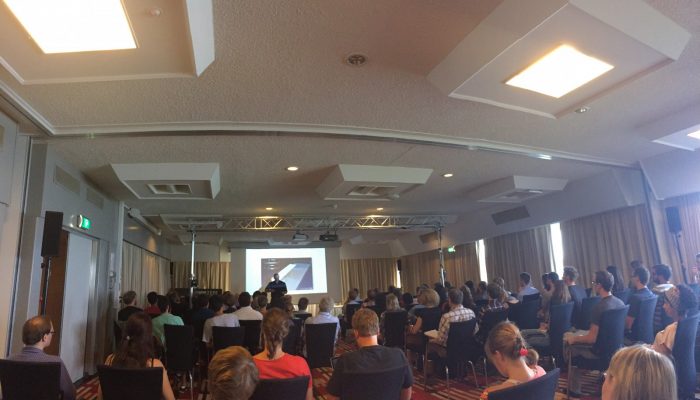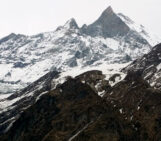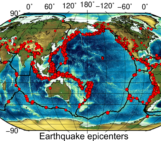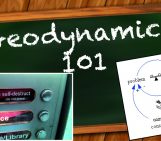
Let’s keep going with the programme: today’s talks dealt with the following topics:
(1) Lower mantle rheology–what do we really know?
(2) Modelling plasticity and fractures in porous media: everything goes wrong!
(3) Complexities of subduction dynamics.
The first keynote talk was on the rheology of the lower mantle, an important part of the Earth. John Hernlund spent his 45 min describing what the lower mantle is and what it is made of. He also went over where you can find surface expressions and its importance in shaping our planet.
How can we possibly know what’s in the lower mantle if it is so far below the surface?
Geodynamic modellers have to get creative to figure out what the lower mantle is made of.
Although uncertainties of present data preclude precise numerical predictions, several interesting achievements in this area have recently been published. So, stay tuned!
The second talk–by René de Borst–was about the mechanical behaviour of geomaterials. He gave an overview of how complex these materials are, from almost the onset of loading to shear deformation and the volumetric response. Modellers have been warned about the possibility that non-uniqueness occurs as a consequence of strain softening and plasticity. Since different options exist, we should keep discussing the physical consequences carefully!
Thorsten Becker had the last talk of the day. What did we learn from him? Very briefly, we can summarise it in three key-points:
(1) Rock rheology is a usual suspect for uncertainty;
(2) Oceanic slabs reign supreme in controlling plate motions;
(3) Two slabs are better than one!
Free afternoon – Introduction to windsurfing
This afternoon the NetherMod crew had the chance to stop talking about slabs, rifting, plasticity, and partial differential equations. One group went to the lake for an awesome windsurfing lesson.
Why is windsurfing awesome?
After this unforgettable experience, geodynamic modellers have heaps of reasons why they would say that windsurfing is the best sport ever. All you have to do is ask any modeller “Why windsurfing?” and they will give you explanations of what makes windsurfing great.
Windsurfing is easy
There are tons of sports that are hard to learn: bike riding, snowboarding, rock climbing and the list goes on. Windsurfing has a great advantage in that you can make the learning environment ideal, even if you are a nerdy scientist! You only need flat water and light constant winds.
Windsurfing is a great exercise
Obviously all sports end up being good for fitness. However, the great thing of windsurfing is that the intensity varies along with your level, in the same way as you work on numerical codes!
So, do you believe it? Two more geodynamicists try to convince you:
Simon Preuss (PhD student, ETH Zürich, Switzerland):
“Wow, what a great day. I mean, usually I don’t do sports and every sport I start gets boring really quickly.
But you know… I got the feeling windsurfing is different: it’s a sport that you do alone on your own board with your own sail–sounds depressing, I know. But actually we went with a group of 20 people and everybody managed to catch the wind right away. And well, I guess after ~1 hour we were ~20 meters away from the coastline–it was great!!
If I had the chance to do it again I would do it right away. It’s just surprising how fast you can learn sports. Definitely easier then understanding geodynamic models.”
Anna Gülcher (MSc student, ETH Zürich, The Netherlands and windsurfing teacher):
“I must say the geophysicists pleasantly surprised me in how fast they picked up the windsurfing. Within half an hour everyone stood up straight and was actually windsurfing. It’s a pity the wind was not strong enough to fully challenge everyone!”






